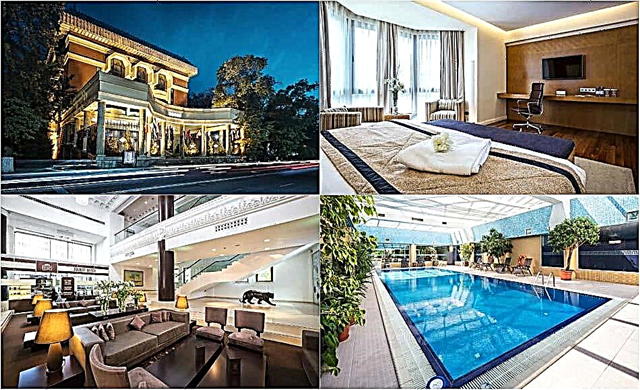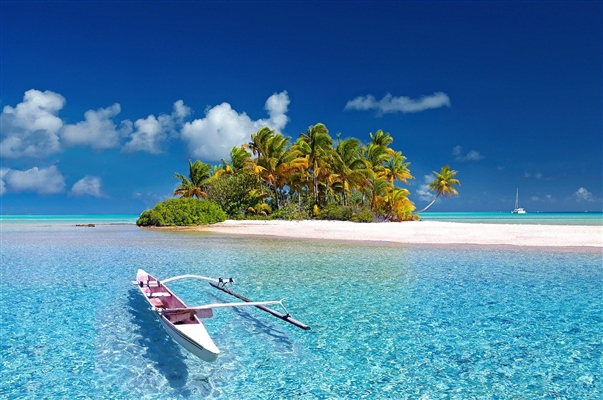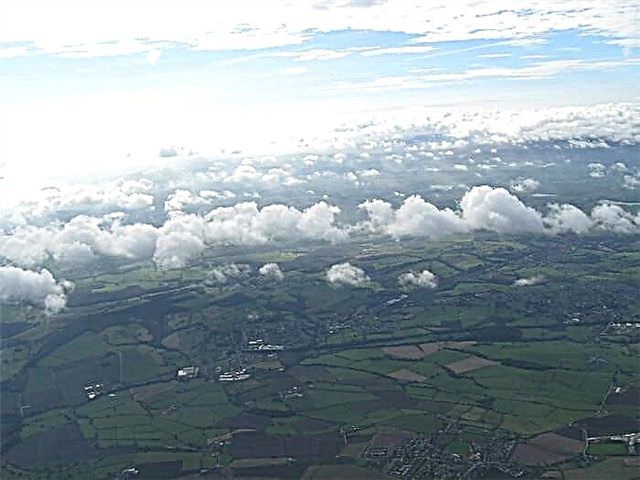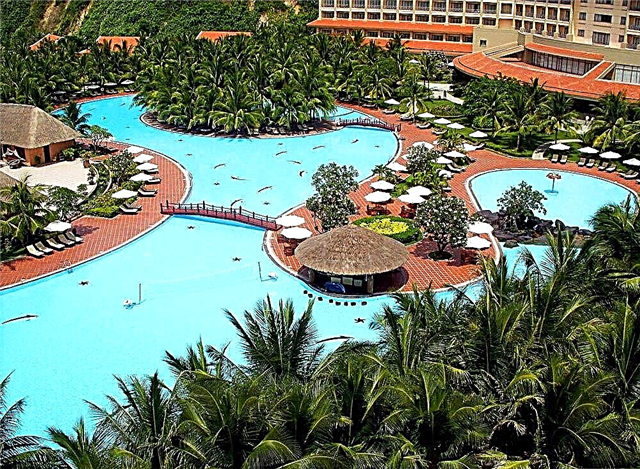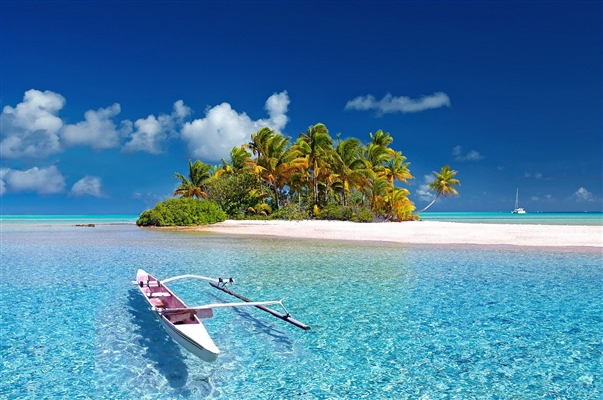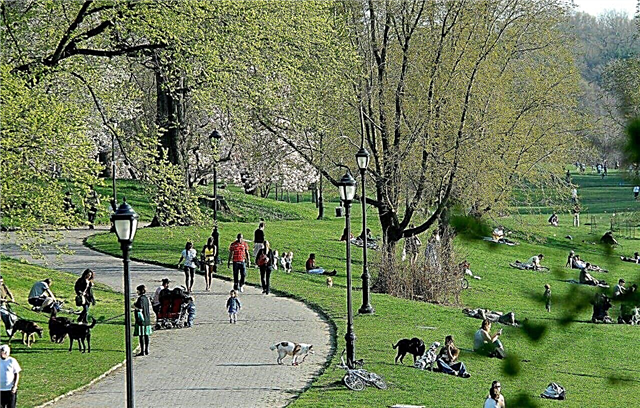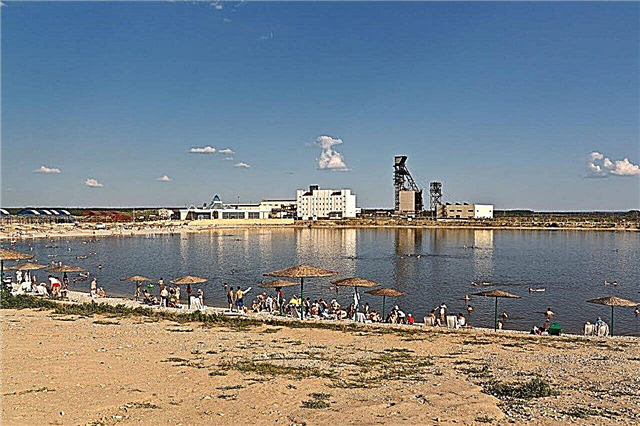The Orenburg region welcomes guests with a whole range of attractions, both unique and characteristic of many cities in our country. The natural beauty of the region is represented by the Buzuluk forest, Mount Colonel, Kamsak gorge and other interesting objects. Don't forget about the location of the region, which is emphasized by the pedestrian bridge connecting Europe and Asia.
Pilgrims will love the Nikolsky Cathedral and the Holy Trinity Monastery of Mercy. In addition, there are not only Orthodox institutions, but also, for example, the Khusainiya mosque. Museum lovers can learn about the history of Orenburg, or admire the art objects. The architecture in the area is rich in monuments of the past, which stand alongside modern buildings that convey the style of the times.
The most interesting and beautiful places in the region
List, photos with names and descriptions of the best attractions in the Orenburg region!
Sol-Iletsk and Lake Razval
The city can be called the main resort of the region. Not only locals come here in the summer months, but also guests from other regions. The reason for this interest is the salt and mud lakes. Collapse is the main lake on this list. Small in area - 0.068 km², sandy shores. The greatest depth is about 22 meters. Water has healing properties and is very beneficial for the skin.

National Park "Buzuluk Bor"
The forest area covers an area of 1067 km². Pines are the predominant tree species. The park belongs to the territory of two regions, Samara and Orenburg. In 2013, it suffered from a large fire. Recreation centers have been built in nearby villages and camping sites. There are oil fields nearby, the development of which can affect the environment. However, the production agreement has already been signed.

Catherine Church in Tugustemir
Built in 1852 in honor of the holy great martyr. The facade was decorated with figures of the apostles. After the temple was closed during the Soviet era, the statues were almost completely destroyed, only fragments remained of them. The building itself and the nearby bell tower were used as storage facilities. Now reconstruction is underway, the interior decoration has suffered less, the old frescoes are visible, which will also be updated.

Camel Mountain
Located in the east of the region. The mountain looks like a camel lying down to rest. Several legends are associated with this place. One of them tells about a camel who wanted to measure his strength with the Ural mountains. He came here from afar, but the gods said that only stone with stone can compete. For this reason, the camel has turned to stone and is now trying to surpass its rivals with durability.

Iriklinskoe reservoir
Located on the Ural River, it was filled in 1966. It appeared after the construction of the hydroelectric power station of the same name. The area is 260 km², the coastline stretches for 581 km. After its formation, more than 20 settlements had to be relocated. The need for it has ripened for a long time: this is how enterprises and residential buildings were provided with uninterrupted water supplies, and also created a supply of water in case of an emergency.

Orenburg reserve
It was founded in 1989 and covers an area of 38,191 hectares. The main task of the reserve workers is to preserve the unique steppes of this climatic zone. The territory is divided into five sections and each has characteristics that are special only for it. The fauna is represented by a wide range of species. The biofunds are constantly replenished, for example, in 2017, Przewalski's horses were brought. There are many endangered and especially rare plants among the plants.

Museum-reserve S. T. Aksakov
Founded in 1998 in the estate, where the writer spent his childhood, and also from time to time later lived. The nearby village is named after the Aksakovs. The complex includes not only the main museum building, but also outbuildings, as well as a park with a linden alley, a pond and a river. The exposition tells about the writer and his work, about the Russian nobility, about the development of the local lands in general.

Guberlin mountains
They are located in the eastern part of the region. The mountain range stretches for 70 km. It is heterogeneous and divided into conditional sections by ravines, gorges, and its tributaries by the Guberli River. The highest point is Mount Poperechnaya. The vegetation is dominated by steppe, as well as mosses and lichens. There are deposits of minerals: chromium, copper, nickel and others. They are part of the Ural Mountains system and are adjacent to Mugodzhary.

Mount Colonel
Belongs to the South Ural mountain system. Located on the outskirts of Orsk. The Ori river flows nearby. The height is about 60 m at the extreme point. The name refers to a Cossack soldier who was engaged in horse breeding on the slopes of the mountain. One of the important features is the jasper deposit. It is used for making art objects and decorative trimmings. There are products made from this jasper in the Kremlin and in the Hermitage.

Caravan-Saray in Orenburg
Built in the first half of the 18th century. It was originally built on the outskirts of the settlement, but now it is surrounded by dense buildings. The complex included a park, a main building, a mosque and a minaret. All objects have been preserved, but with some corrections in appearance. The interior decoration has also undergone significant changes, but retained the style. On the one hand, the park had to be liquidated due to lack of space.

Cultural complex "National Village"
It has existed since 2004 in Orenburg. Consists of separate farmsteads representing the ethnic groups that inhabit the area. Here they will tell about the history of nationalities, show their way of life and customs. In addition, each courtyard has a restaurant with national cuisine and a kiosk with souvenir products. You can taste rare dishes and buy folk art items as a keepsake.

Nikolsky Cathedral in Orenburg
The year of foundation is 1883, the consecration took place three years later. At first she had one throne, later their number was increased to three. Since the 30s, the temple was closed, the building was used as a hostel and archive. In the 80s, a big reconstruction began. For a decade, all the existing destruction was eliminated and a new bell tower was built. There is a Sunday school at the cathedral. The main shrine is the Tabyn Icon of the Mother of God.

Tower with chimes
It was planned to build a similar structure on the main pedestrian street of Orenburg for a long time. The project began to be developed in the 80s of the last century. But with it, some problems constantly arose, most often associated with a lack of funding. It was only in 2005 that the tower with the chimes 35 m high was completed, as well as the finishing work inside. Now there is a trading house inside.

Museum of the History of Orenburg
The opening took place in 1983. Initially, it was a branch of the local history department, but later gained independence. The halls of the museum house an extensive exposition, divided into 9 separate exhibitions. They tell about different stages in the history of the city, famous residents, architecture of Orenburg and more. The museum building was built in the middle of the 19th century and looks like a castle.

Art Museum
Founded in 1960 in Orenburg. The only museum of its kind in the region. Occupies a building that was originally erected at the beginning of the 19th century for the city council. The basis of the exposition is the personal collection of itinerant Popov. Paintings, graphics, sculptures and more are collected under one roof. There are works by representatives of domestic and foreign schools of different times. There are two branches - a gallery and an exhibition hall.

Orenburg Governor's Museum
One of the oldest museums in Russia. It was founded in 1830, but did not have a permanent building, and the collection often wandered. During the civil war, most of the collection was lost. After the Second World War, a full-fledged restoration of funds began.The collected archaeological finds, manuscripts, coins, samples of clothing and other exhibits were housed in the mansion of the merchant Yenikuntsev, in which they remain to this day.

Exhibition complex "Salute, Victory!"
The open-air museum began its history in 2005 in Orenburg. Its opening was timed to coincide with the 60th anniversary of the victory over the Nazis. Among the exhibits there are in the past operating tanks, busts and monuments to veterans and outstanding soldiers, both personal and general, vehicles, artillery pieces, airplanes, agricultural vehicles, samples of bombs, etc. There is a summer stage and a chapel.

Toy railway
The length is a little less than 6 km. The narrow-gauge railway is laid along the coast of the Urals. Opened in 1953, since then changes have been periodically made to the operating procedure, but the functioning remains the same. The rolling stock is also being updated, and more modern wagons appear. The road spans 4 stations, linking popular routes among young passengers.

Pedestrian bridge Europe-Asia
Thrown across the Urals and is a symbolic border between the two parts of the world. There is a stele in the middle of the bridge, which tells about this to a rare uninformed tourist. For most, she is another reason to be photographed. The European part overlooks the Orenburg embankment, and the eastern part - into a grove with tall trees, under the shade of which you can hide in the heat.

Husainiya Mosque
At the suggestion of a Tatar merchant and with his donations, it was erected in Orenburg in 1892 together with a minaret. Became conciliar or Friday for more than 600 Muslims who belonged to the number of merchants and employees. In 1931, after minor friction, the mosque was closed, and the building came under the control of a student dormitory. She opened the doors to believers again 60 years later.

Reserve "Shaitan-Tau"
It has existed in its current status since 2014. Located in the northern part of the Kuvandyk region. The main task is to preserve the oak forest-steppe. It is also important to educate the population and promote the development of ecotourism. The fauna is typical for steppes and forests, and representatives of such different zones perfectly coexist. Flora attracts the attention of researchers because of the unusual combinations that grow in a number of species.

Complex "Red Mountain"
It is located in Saraktash and rises on the right bank of the Sakmara. In the late 90s, a historical film by Alexander Proshkin was filmed here, for which a life-size fortress was built. After the completion of the work, the object was not destroyed, and over time it grew, acquired cultural significance and is now one of the attractions of the region. Due to the influx of tourists, the village is also developing.

Luna Landscape Park
The territory is private and is located in the Sharlyk region. Visitors are greeted by two symmetrical wide towers with carved gates. They are made of wood, like most of the buildings in the park. Here you can see in detail the impressive size of the mill, the pier, houses and numerous sculptures, mainly depicting animals. The place is quiet, away from busy routes.

Sorochinskoe reservoir
Named after the nearby city. It was filled in 1997 and is necessary primarily for regulating the flow of Samara. In addition to this, the appearance of the reservoir solved some of the economic and domestic problems of the region, made it possible to organize fishing, as well as equip a recreation area. However, there is no consensus on the negative impact of an artificial reservoir on the environment.

Kyzyladyr karst field
It stretches for 12 km in the Kuvandyk region, and is approximately 1.5 km wide. The relief is very heterogeneous: hills, rocky outcrops, hollows, craters, caves. The highest point is Mount Burkutbay. There are springs, and some plants are listed in the Red Book. The study of the area continues; in the past, human influence was minimal here, which attracts researchers.

Sakmara river
Rafting on Sakmara is one of the most popular tourist attractions. Most often, fans of water adventures use the upper section of the river: there is a moderate current, many rapids, picturesque views. The best time for rafting is May-early June. Then the reservoir will become shallow, and then the temperatures will drop. Supplies and inventory must be prepared in advance, as there will be nowhere to replenish stocks.

Kamsak gorge
It was formed thanks to the waters of the river of the same name. The left bank is much higher than the right one. It is decorated with pillars 10 m high, called soldiers. Excursions here are a popular route for visiting tourists. People come here for landscape shots, as well as fishing or breathing fresh air while hiking. Recreation centers and sanatoriums with mud treatment are located nearby.

Krasnaya Krucha
Geological object related to the territory of the Ilek region. By itself, it represents a cliff of the coast near the pond, and the slopes have a rich and bright red color. The maximum height is about 18 m. It is heterogeneous in its composition, there are impurities in the sandstone. There is also no unity in the form: wind and water did their job, columns and additional concave spaces were formed from their influence.

Holy Trinity Monastery of Mercy
Located in the village of Saraktash, founded in 1990. In many ways, the organization of the Orthodox community and related institutions is the merit of Archpriest Nikolai Stremsky. He and his wife are raising 70 children. The priest founded a parish school, a house of mercy for the sick and lonely old people, a religious school, a monastic community, and a museum. There is a subsidiary farm, a bakery and a sewing workshop.

Church of the Transfiguration of the Lord in Orsk
It has existed in its current status and with this name since the middle of the 18th century. It was formed on the basis of an older church, which was transferred to other places many times due to floods. A century and a half passed after the consecration of the temple, and it was rebuilt, becoming completely stone. It went through closure and revival in the 90s. Now a gymnasium operates on its basis, a newspaper is published, and religious events are held.


